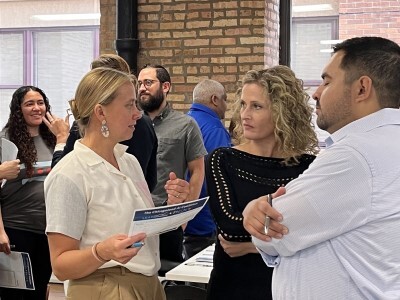Technology Tools
The LMS of the Future: Exploring the Next Generation Digital Learning Environment
Topics

Educators often take advantage of educational technologies as they make the shifts in instruction, teacher roles, and learning experiences that next gen learning requires. Technology should not lead the design of learning, but when educators use it to personalize and enrich learning, it has the potential to accelerate mastery of critical content and skills by all students.
If you could replace your current LMS with any application or platform you could imagine, what would it look like?
If you could replace your current LMS with any application or platform you could imagine, what would it look like? Would it be much like what you have now, but with specific improvements and enhancements? Or would it be something totally out of the box, an entirely new approach?
Over the past six months, EDUCAUSE has been conducting research on that very question. Enabled by a grant from the Bill & Melinda Gates Foundation, the EDUCAUSE team solicited input from roughly 80 thought leaders from the higher education community, including faculty, academic technology staff, accessibility experts, and vendors. The team conducted interviews, convened brainstorming sessions and commissioned a special report from the EDUCAUSE Center for Analysis and Research (ECAR) on the current state of the LMS. We have summarized our findings in a recently released white paper.
The results show clearly just how much our thinking about teaching and learning has changed over the past several years.
We are calling the successor to the LMS the next-generation digital learning environment (or NGDLE). That name already discloses one of our key findings: the NGDLE will not be a single, enterprise-level application, but rather an environment or learning ecosystem.
In the past, when there was a pronounced need, higher education technologists have built an application to address that need. The Sakai LMS is a good example of this approach. Yet very early in our research, it was clear that this approach will not continue to work. The single chunk of code that lies behind a single application cannot possibly address the far-ranging diversity of the post-secondary teaching and learning landscape. Like the built environment, code imposes a point of view.
In place of that, we are suggesting what we call a “Lego approach,” where NGDLE-conforming components allow individuals and institutions the opportunity to construct learning environments tailored to their requirements and goals. The challenge lies in defining “NGDLE conformance” that would enable such a confederated approach.
In the course of our research, we identified five functional domains that must be addressed in order to realize the NGDLE. These are:
- Interoperability. The linchpin of the NGDLE, this is the capacity to easily integrate tools, exchange content, and collect learning data. Interoperability enables everything else.
- Personalization. This is the customization of the environment to support needs at the individual, discipline, and institutional levels.
- Analytics, advising, and learning assessment. This is the analysis of all forms of learning data, resulting in actionable information.
- Collaboration. It is vital to support collaboration at a variety of levels, and to make it easy to move between public and private digital spaces.
- Accessibility and universal design. All participants must be able to access content and have the means to produce accessible content. This must inform the design of all NGDLE components.
We invite you to review our findings by reading the white paper and adding your insights via your own blog posts, tweets, and conference sessions.




